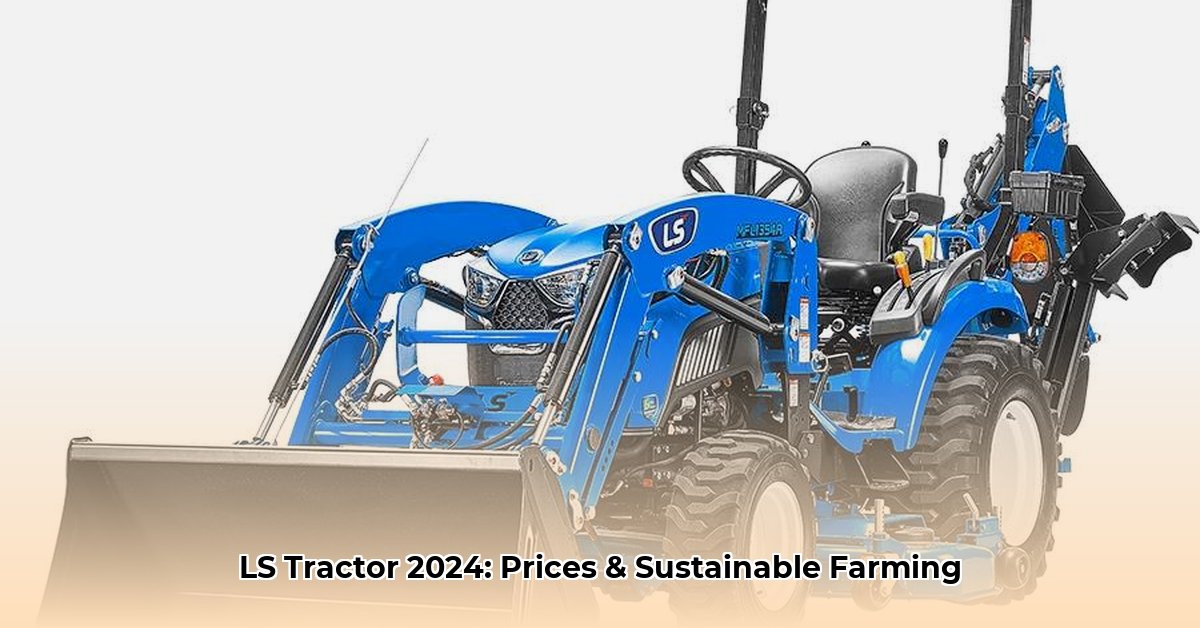
Decoding LS Tractor Prices: A Comprehensive Guide
Thinking about purchasing an LS tractor? Understanding the cost is crucial. LS tractor prices range significantly, from approximately $14,000 for smaller models to over $50,000 for larger, more powerful machines. This guide breaks down the factors influencing these prices, helping you make an informed decision. We'll explore various models, fuel efficiency considerations, and smart buying strategies. For a comparison, check out the pricing of high-end tractors like Lamborghini here.
Key Factors Affecting LS Tractor Cost
Several factors contribute to the price variation of LS tractors. These include:
Horsepower: Higher horsepower engines command higher prices. More power translates to greater capabilities, but it also comes with a price premium. Consider your specific needs; don't overspend on power you won't use.
Features and Options: Additional features, such as advanced transmissions (e.g., CVT), enhanced hydraulic systems, and specialized implements, significantly increase the tractor's cost. Prioritize the features essential for your farming operations.
Condition (New vs. Used): Brand-new LS tractors will naturally cost more than used models. However, used tractors can present excellent value if they're well-maintained. Thoroughly inspect any used tractor before purchase.
Popular LS Tractor Models: A Closer Look
LS offers various models catering to different farming needs. The popular MT series, for example, provides a range of horsepower options and features:
LS MT2 Series: Known for its user-friendly hydrostatic transmission and fuel efficiency, making it a cost-effective choice for many farmers.
LS MT468CPS (and similar higher-end models): These top-tier models offer advanced capabilities and features, resulting in a higher purchase price. They are ideal for large-scale operations requiring maximum power and precision.
Smaller tractors (under 40 horsepower) with mechanical front-wheel drive (MFWD) are increasingly popular due to their excellent traction and reduced soil compaction, aligning well with sustainable farming practices. Larger, four-wheel-drive models are available for operations demanding maximum traction in challenging conditions.
Understanding Regional Price Variations and Data Limitations
Online resources provide a general idea of LS tractor pricing, but regional differences exist. Dealer markups and transportation costs influence the final price. Always compare prices from multiple dealers in your area for the best deal. Additionally, comprehensive fuel consumption data is often scarce online, making accurate long-term cost estimations challenging.
"Precise fuel consumption data is crucial for long-term cost analysis, but it's often missing from online resources," says Dr. Emily Carter, Agricultural Economist at Purdue University. "Farmers should prioritize obtaining this information directly from dealers or through independent testing."
Fuel Efficiency: A Critical Factor for Sustainable Farming
Fuel efficiency significantly impacts both your operating costs and environmental footprint. While manufacturer specifications offer some information, real-world experiences often deviate. Consider these factors:
Engine Size: Bigger engines generally consume more fuel, but may offer faster task completion, thereby potentially offsetting higher fuel costs.
Transmission Type: Continuously Variable Transmissions (CVTs) often provide better fuel economy than manual or automatic transmissions.
Operating Techniques: Efficient driving habits and precision farming technologies (GPS guidance, auto-steer) minimize fuel waste.
"Optimizing fuel consumption requires a holistic approach," explains John Miller, a veteran farmer from Iowa. "It's not just about the tractor itself; it's about how you use it."
Navigating the Purchase Process: A Step-by-Step Guide
Define Your Needs: Assess your farming operation's size and requirements to determine the necessary horsepower and features.
Research Models: Explore different LS tractor models, comparing horsepower, features, and price points.
Gather Pricing Information: Obtain quotes from multiple LS dealers, comparing prices and available options.
Evaluate Fuel Efficiency: Consider the tractor's fuel consumption in relation to your typical work load.
Inspect Carefully: If buying used, perform a thorough inspection before purchase.
Secure Financing: Explore financing options from financial institutions offering packages tailored to sustainable farming practices.
By carefully considering these factors and following a structured approach, you can confidently select the optimal LS tractor for your farming needs and budget. Remember that tractor technology changes consistently; consult your local LS dealer for the most up-to-date information.